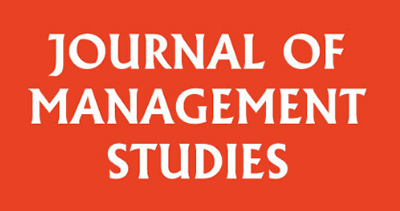
Challenges of finding better ways to work together
Interprofessional collaborations are becoming widespread in many professional contexts from healthcare to construction. However, it is unrealistic to think that simply bringing professionals in teams will lead to collaboration. The lack of knowledge of other professionals’ skills, reluctance to change and the absence of interprofessional education in curriculums have been reported as hindering interprofessional collaborations. This article, published in Journal of Management Studies, finds that adapting to new ways of working together in increasingly interdependent work environments can present serious challenges for professional workers and their employing organizations.
Drawing on an extensive study of architects working in Professional Service Firms, this article explores the types of identity threats posed by working in cross-functional teams. This study finds that the fragmentation of professional work and competing values among professionals in the project team, were experienced as threatening to architects’ identity because it diminished their role in the design process. Although architects believed interprofessional collaborations resulted in better project outcomes, they were also frustrated, anxious, discouraged and even angry about team decisions which reduced the quality of the architectural service in favour of efficiency concerns. When confronted with marginalized roles in the project teams architects highlighted identity distinctions as the authoritative expert in relation to other professionals in the team (consultants, engineers etc). However,
although architects feared that the overall success of the project was at stake because of the
amount of design work being done by non-designers (e.g., design-build contractors), architects acknowledged that this is not a ‘passing phase’, thus they had to modify and adjust their identity and practices.
Despite attempts to resolve the identity threats, by highlighting identity distinctions and modifying their identity and practices to suit the changing needs of collaborations, surprisingly, architects felt powerless and under-valued as they struggled to convince and influence others. While some respondents saw opportunities to take on a bigger role, they were under-compensated and thus unable to improve their marginalized position in project teams.
A key finding of this study is that responses aimed at mitigating, deflecting and/or defending against professional identity threats may in fact, styme identity change in
collaborative contexts. Accordingly, responses to protect against identity threats may be a kind of self-defeating inertia that hamper change such that the inability to reconcile changes to a strong and traditional professional identity in collaborative contexts potentially marginalizes the professional further. These findings are significant as professionals adapt to changing workplace ecosystems and find new ways of working together.
Unintended consequences of emphasising interprofessional collaborations
The research findings are notable for highlighting the challenges of finding new ways of working together in an increasingly interconnected and interdependent world of work. While some have suggested that professional workers retain control over how they enact their role in collaborations, others have highlighted that understanding and explicating the experience of identity threats in different contexts is important for individuals, organizations and society. This is because the inability to cope with change can lead to vicious cycles of defensiveness, disillusionment, dysfunction and despair that may ultimately undermine the aim of collaborating. I have argued that the strategies used in response to professional identity threats and provide a way of better understanding behaviour in collaborations and improving interorganizational project outcomes.
Practical Implications
Leaders and managers need to decide how to structure relationships among these cross-functional teams to effectively manage these interconnected, complex workforce systems. This involves a mindset shift from managing employees to orchestrating workforce ecosystems. For example, purposely plan opportunities for interactions and conversations aimed at transforming domain-specific knowledge so that it can be used toward a shared goal. Additionally, leaders and managers can motivate professionals to appreciate divisions within the team and include diverse identities in teamwork to improve interorganizational project outcomes. Professions also need to work closely together to fully realize more productive collaborations, which may also better prepare professions for the changes the future of work brings.

0 Comments